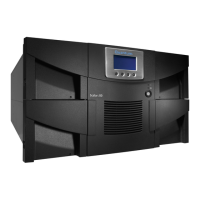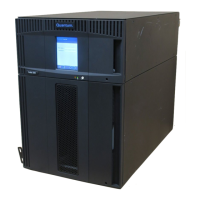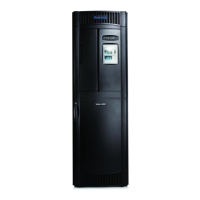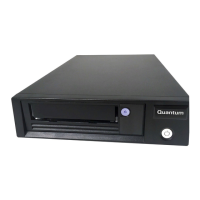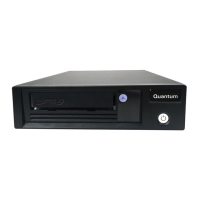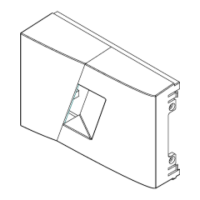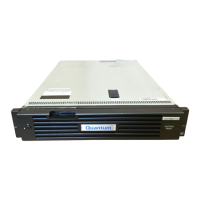Chapter 4 Configuring Your Library
Working With Data Path Conditioning
Scalar i2000 User’s Guide 201
Installing the Host
Registration Service 4
The host registration service (HRS) is a daemon that simplifies security
configuration and enables libraries to monitor host connections to the
library. HRS sends a periodic data pulse through the host's Fibre Channel
host bus adapter (HBA) to the library. The pulse contains the host's
World Wide Name (WWN), host name, HBA type, and host port
connection.
When the library senses the HRS pulse from a host, the data path to the
host registers as “Good.” This information is sent periodically over the
host Fibre Channel connection.
The default HRS setting re-registers the host every 5 minutes. You can
change the re-registration period to any value between 1 and 255 minutes.
There is no Help system for HRS.
The HRS software is available from the Quantum customer service web
site or from your service representative.
Installing the Host Registration Service for Windows 4
Install this software on a host computer that runs the Windows operating
system and is attached to the library. On a Windows system, the re-
registration period cannot be changed because HRS runs as a service
rather than as an independent program.
1 Verify that the Windows host you are configuring has an installed
host bus adapter (HBA).
2 Load the CD that contains the HstRegSrv.exe executable file.
The data path monitored by HRS must experience
problems for two period intervals before a problem
is detected and a ticket is generated.
If you plan to use the FC Host command, install
HRS on the appropriate hosts. If you do not plan to
use the FC Host command, you can manage your
library without installing HRS. However, HRS
makes sure that data path conditioning includes
the host portion of the data path.

